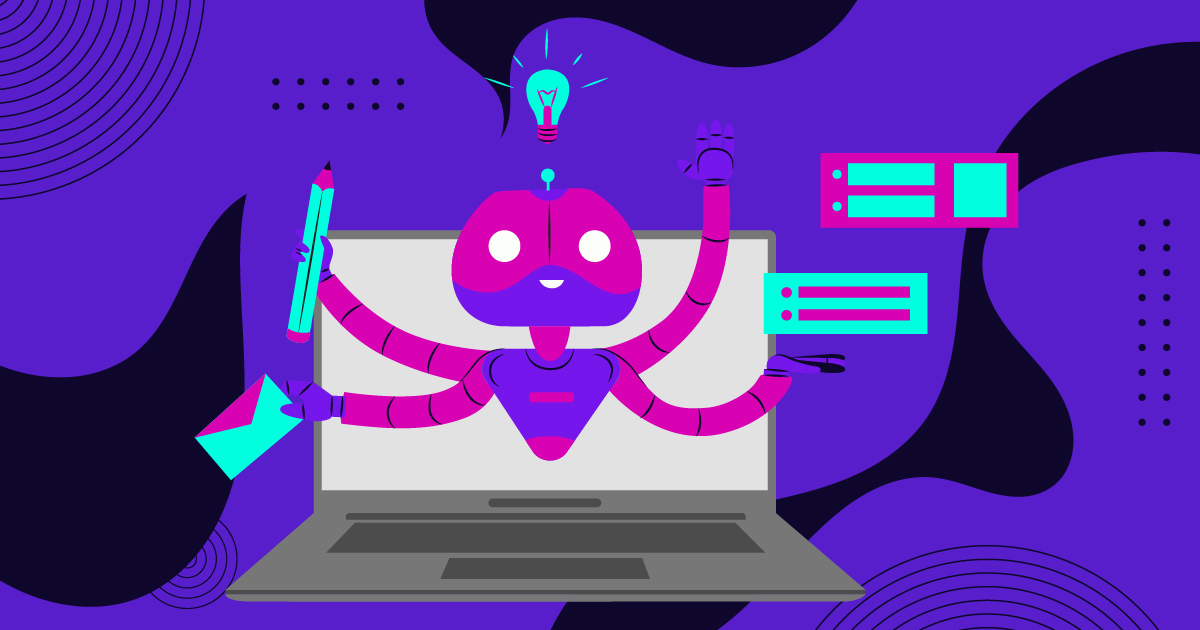
Every day professionals are looking for new ways to put AI to work – sales, marketing, graphic design, and content writing to name a few. But as with any AI marketing tool, people are wondering: Does it actually work, or is it all hype? Can I really just click a button and create a usable ad to market my business? In this post, we’ll explore what AI-generated ads can (and can’t) do.
Table of Contents
What is an AI-generated ad?
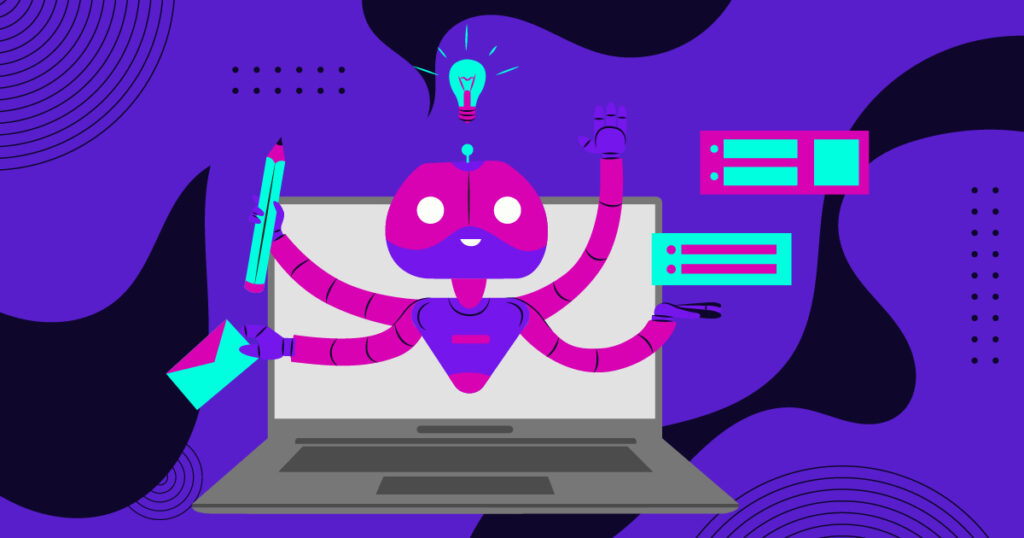
When someone refers to an AI-generated ad, they’re usually talking about one of the following:
- ad copy that has been written by AI
- visuals that have been generated by AI
- predictive analytics that are used to target specific audiences
- product recommendation systems that run on AI
In every instance, AI is somehow being employed, but the process is different for each.
The AI-Generated Ad Process
- AI generates the ad’s content based on the inputs provided. Maybe you’re marketing a new product or service, marketing to a particular audience segment, or running an ad campaign about specific features and benefits. Whatever the case, you provide the focus.
- Via natural language processing (NLP), your AI tool generates the ad copy. It will analyze existing advertisements for inspiration and generate relevant text accordingly.
- Depending on the tool you use, your AI-ad generator might create graphics or video too. At the more advanced end of the spectrum, this involves generative adversarial networks (GANs) based on the description you provide.
- Next, you’d use AI to optimize the ad after generation. This means ensuring there are no glaring errors and that the ad gets the point across. Some AI platforms can formulate ads for specific platforms or formats, such as Facebook posts, print, or video.
- Lastly, testing and Iteration. There are AI tools already on the market that run A/B tests to gauge ad performance. Whether or not this data is being tested on the right data for your audience is something you’d need to look into.
The end result of all of this would be an ad that’s conceived, created, and optimized by artificial intelligence. That means minimal human intervention. But the question is: Can AI really pull it off?
Challenges of Using AI-Generated Ads
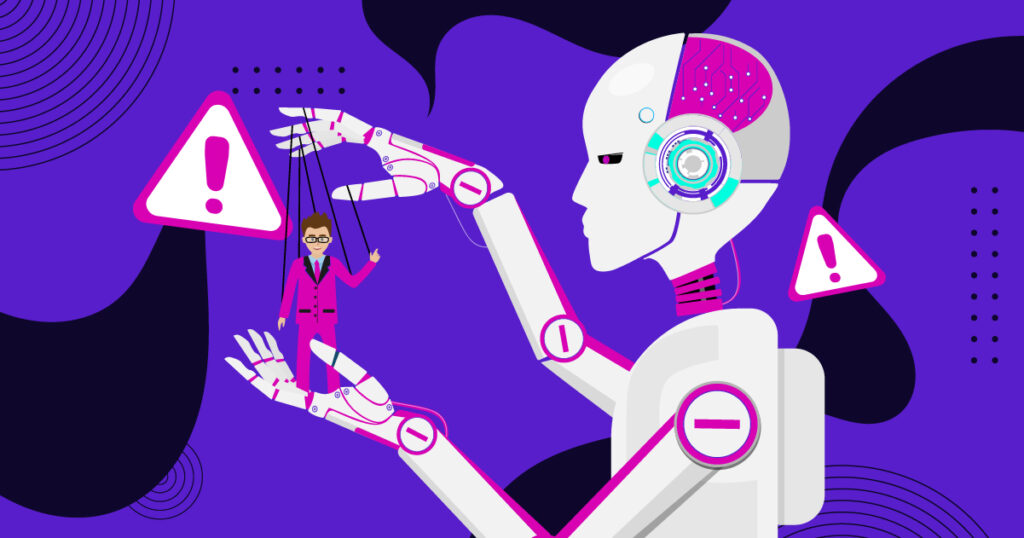
One of the most glaring shortcomings of AI image ads is misspelled words. Image generators can’t spell (like AI copy generators), so they typically include grammar mistakes if there’s any text in the image. Once an image is generated by AI, it can’t be edited, and text is sometimes added without you requesting it in the prompt. This inability to edit out errors is the hallmark downside of AI image generators.
You won’t get much from free AI ad generators. Marketers who want reasonable quality will have to sign up for a paid platform. Some of the better tools will grant access to campaign management and even AI model training. But these tools are still in the early phases of development and customer reviews are mixed.
Another factor to consider is that AI can’t be relied upon to be unbiased. It won’t generate images with things like diversity in mind. So it’s up to marketers to catch these issues and re-generate ads.
Can ChatGPT generate ads?
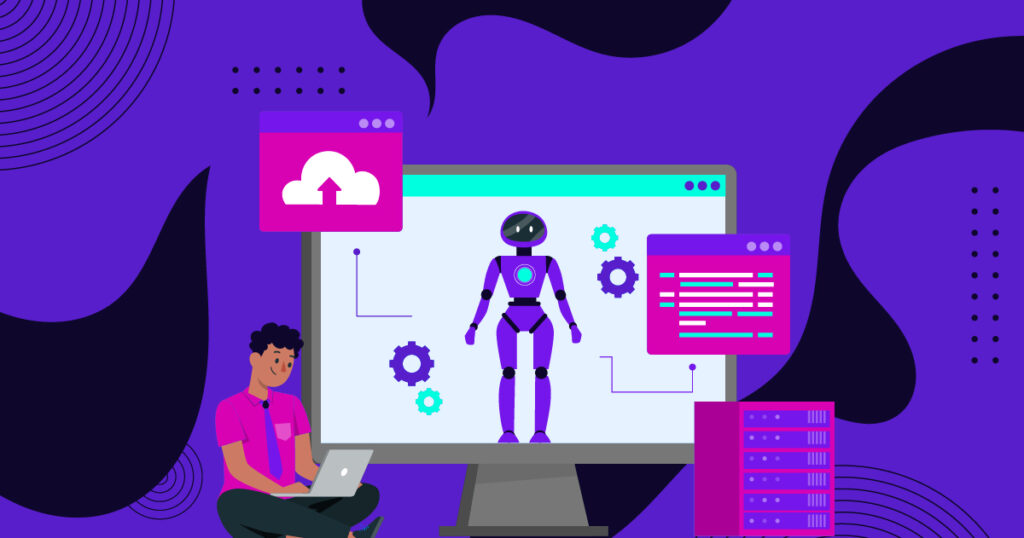
ChatGPT can generate ad copy but no visuals (unless you have ChatGPT Plus). The more specific the prompt, the better. For example, a user can say:
“Write a straight-forward ad highlighting the convenience and versatility of meal delivery service [name]. Focus on the wide range of menu options, time-saving benefits, and the experience of having restaurant-quality meals at home all week long. Target audience: busy professionals. Provide 2 different options.”
AI doesn’t do well with subjective language (eg. better, best, high-quality). When your language is vague, ChatGPT will generate more generic content. Being specific and objective will get you closer to a usable ad.
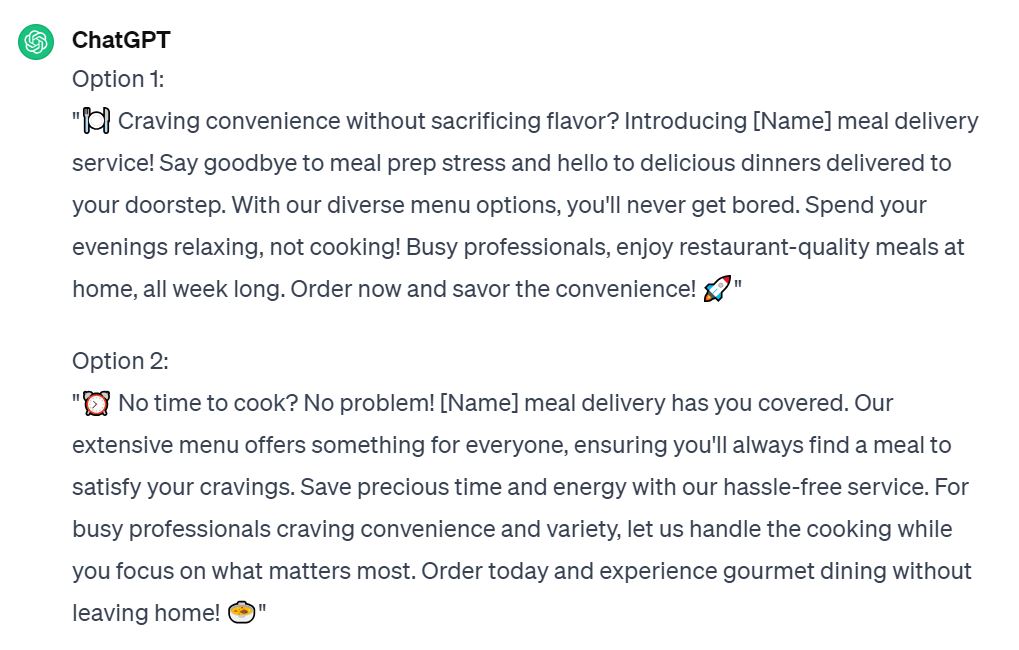
Once your options are generated, choose the best one. This is where you might be tempted to quit if the ad copy isn’t good enough. But the key is to keep refining:
“Rewrite option two to be friendly but with less exclamation points. Tailor it to a brand that uses light-hearted sarcasm to make the reader laugh.”
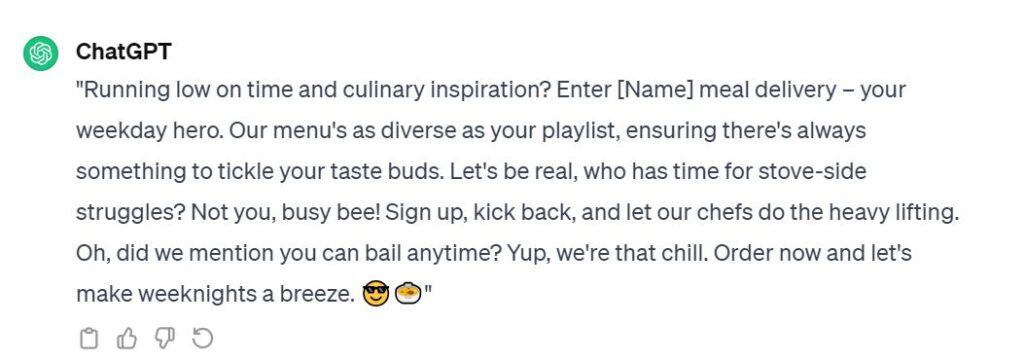
Getting the most out of AI for ad copy is about being patient and specific. The more you practice, the more you’ll learn to create high-quality prompts.
About the author

Brianna Johnson
Brianna is a professional writer of 10+ years who specializes in branding, marketing, and technology content.









